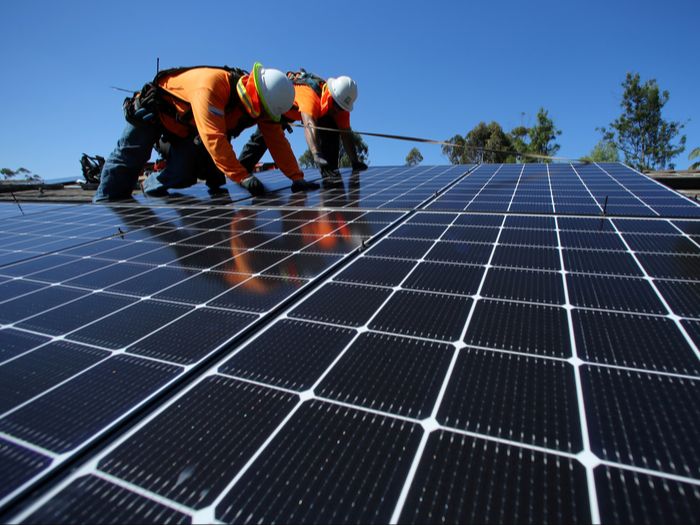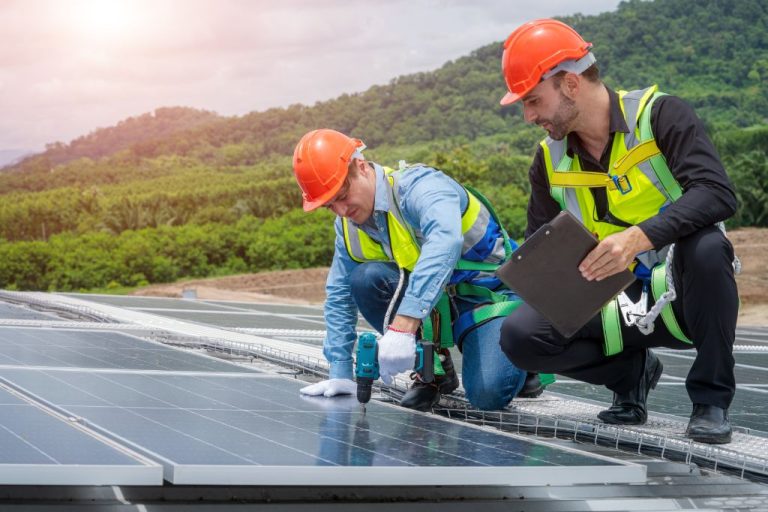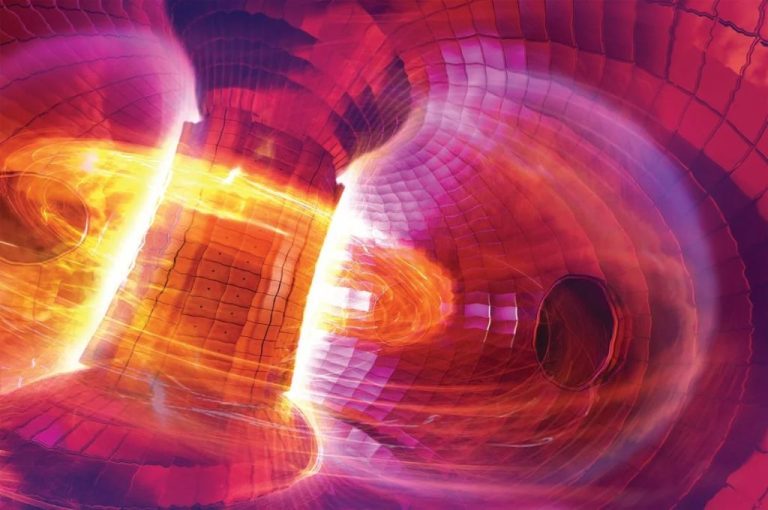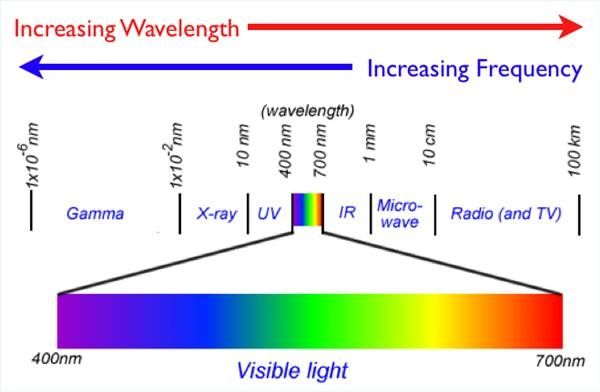What Do Electrical Engineers Do In Renewable Energy?

Electrical engineering is a broad field that encompasses the design, development, testing, and supervision of electrical systems and components. Renewable energy refers to energy obtained from sources that are naturally replenished like sunlight, wind, tides, waves, biomass, and geothermal heat (U.S. Department of Energy).
Electrical engineers play a critical role in renewable energy by designing, developing, and maintaining the electrical infrastructure and systems that allow the generation, transmission, distribution, and storage of energy from renewable sources. Their expertise is essential for advancing clean energy technologies and building sustainable energy systems.
Solar Power
Solar power is one of the biggest growth areas in renewable energy for electrical engineers. As solar panel costs have declined dramatically over the last decade, solar power generation has expanded significantly. Electrical engineers play a key role in the design and installation of solar photovoltaic systems.
Some of the main responsibilities of electrical engineers in solar power include:
- Designing the layout and wiring of solar arrays to maximize energy production.
- Selecting the appropriate inverters and other system components.
- Modeling expected solar energy output based on panel types, tilt, and geographic location.
- Ensuring proper sizing of all electrical components and wiring.
- Adhering to relevant electrical codes and standards for safety.
- Overseeing installation and providing quality assurance.
Electrical engineers also work on concentrated solar power systems, which use mirrors to focus sunlight on a receiver to generate steam and produce electricity. Concentrated solar often utilizes thermal energy storage to provide power when the sun isn’t shining. Electrical engineers are involved in storage system design and integration.
With solar energy expected to quadruple globally by 2030, there is high demand for electrical engineers in the solar power sector. Expertise in power electronics, controls, and energy storage provides electrical engineers with valuable skills to advance solar technology and renewable energy overall. (Source: https://testbook.com/electrical-engineering/solar-power-plant-definition-types-and-components)
Wind Power
Electrical engineers play a crucial role in wind power projects. They are involved in the design, construction, operation and maintenance of wind turbines and wind farms (1). Some of their key responsibilities include:
- Designing the electrical components like generators, transformers, control systems, cables and switchgear (2).
- Integrating wind turbines with the grid and ensuring smooth power transmission (3).
- Installing monitoring systems to track the performance and detect faults in turbines (4).
- Conducting preventive maintenance through periodic inspections and testing (5).
- Troubleshooting issues and repairing electrical faults and outages (6).
- Optimizing systems for maximum power generation.
Electrical engineers need extensive knowledge of power electronics, control theory, instrumentation and data analysis. With the growth in wind energy, there are increasing career opportunities for electrical engineers in wind farm development, turbine manufacturing, operations and maintenance.
(1) Source
(2) Source
Hydropower
Hydropower systems use the energy of falling or flowing water to generate electricity. Electrical engineers play an important role in the design and operation of hydropower plants and dams.
Engineers are involved in determining optimal dam locations and conducting feasibility studies to analyze flow rates, head heights, and power generation potential.source They design the civil structures of dams and intake systems, select appropriate turbine types (such as Francis, Kaplan, or Pelton), and integrate generators, transformers, and electrical components. Operating procedures and control systems are developed to regulate reservoir levels, flows, and power outputs.
Electrical control systems and instrumentation such as sensors and actuators are installed to monitor, operate, and remotely control plant equipment. Engineers oversee equipment installation and commissioning during construction. Once operational, monitoring, preventive and predictive maintenance of equipment is carried out to maximize performance and lifespan.source
Optimizing efficiency, managing sediment flows, and mitigating environmental impacts are key focus areas for electrical engineers in hydropower. They may also get involved in upgrades, modernization projects, and integration of pumped storage facilities to support grid stability.
Geothermal Energy
Geothermal energy is derived from the enormous amounts of heat stored beneath the Earth’s surface. It is considered a renewable energy source as the heat emanating from the core of the earth is essentially limitless. Electrical engineers play a key role in harnessing geothermal energy to produce electricity.
The design and construction of geothermal power plants requires extensive expertise in power generation systems. Electrical engineers are involved in selecting the optimal location for geothermal plants by analyzing geological surveys and studies. They design systems to extract the geothermal fluid from underground reservoirs and convert the steam into electricity via turbines and generators. The fluid is channeled through a closed loop pipeline system to prevent any emission of greenhouse gases. Electrical equipment like transformers, switchgear, and transmission cables are installed to integrate the power plant with the grid. Control, monitoring, and automation systems are also engineered to ensure smooth functioning of the plant.
As per Geothermal Power PPT Seminar Report, factors like high upfront costs, transmission constraints, and location-specific challenges need to be evaluated while designing geothermal systems. However, the ability to provide clean, renewable baseload power makes geothermal energy an important component of sustainable power generation.
Wave/Tidal Energy
Wave and tidal energy are renewable energy sources that utilize the natural movement of ocean waves and tides to generate electricity. Electrical engineers play an important role in developing and implementing these emerging technologies.
Tidal energy relies on tidal barrages or in-stream tidal turbines to convert the movement of tidal waters into electricity. Tidal barrages function similarly to hydropower dams, using the flow of tidal waters to spin turbines 1. In-stream tidal turbines work more like wind turbines, with the flow of the tides moving the turbine blades 2. Electrical engineers design, test, and optimize tidal energy systems and equipment like turbines, generators, and power electronic converters.
Wave energy utilizes different technologies like oscillating water columns, hinged contour devices, or buoys to capture the up-and-down motion of ocean waves. This mechanical energy is then converted into electricity. Electrical engineers are involved in designing and integrating wave energy converter systems and power take-off systems. They also work on developing control systems and grid integration technology for wave power plants.
Overall, electrical engineers play a critical role in conducting research, designing prototypes, selecting appropriate technology, integrating and installing systems, and maintaining wave and tidal energy projects.
Bioenergy
Bioenergy engineers work on converting biomass feedstocks like plants and agricultural waste into useful energy sources like biogas and biofuels. This involves designing, constructing, and operating bioenergy and biomass power systems like anaerobic digesters and biomass gasification plants.
Bioenergy engineers need a strong background in electrical engineering principles as well as an understanding of biology and chemistry. They design electrical and control systems and instrumentation for bioenergy facilities, optimize energy production, and integrate renewable energy systems into existing infrastructure. Key responsibilities include:
– Designing anaerobic digester systems and biogas power plants
– Developing systems for pre-treatment of biomass feedstocks
– Modeling and simulation of bioenergy processes
– Selecting equipment like boilers, gasifiers, generators etc.
– Optimizing system automation and control
According to Jobzmall.com, bioenergy engineers typically have prior work experience in “electrical engineering. Bioenergy engineers need to be able to develop and optimize processes and systems, and this requires a broad understanding of biology, chemistry, and engineering.” There is growing demand for their expertise designing biogas and biomass energy systems as organizations work to utilize more renewable energy.
Energy Storage
Energy storage is a critical component of integrating renewable energy sources like solar and wind onto the electric grid. Fluctuations in renewable generation need to be balanced with energy storage to ensure reliable power delivery. Electrical engineers working in energy storage focus on developing and improving battery and other storage technologies to support renewable growth (Energy Storage Solutions).
Lithium-ion batteries have become a popular form of energy storage due to their high energy density and efficiency. However, concerns over lithium availability and cost have driven new innovations like the lithium-cement “supercacitor” developed at MIT. This supercapacitor uses low-cost materials and can store 2x more energy than conventional batteries (MIT engineers create an energy-storing superc). Electrical engineers are at the forefront of translating lab-scale prototypes like these into real-world products for the power grid.
Other battery chemistries like zinc-air and flow batteries also show promise for grid-scale energy storage. Electrical engineers optimize these storage systems for cost, safety, cycle life, and sustainability. Their expertise is essential for integrating storage solutions with renewable generation assets and the larger grid.
Smart Grids
Electrical engineers play a key role in developing and implementing smart grid technologies to help manage the influx of renewable energy sources like solar and wind power onto the electric grid (Smart Grids – Polimi). As more intermittent renewable energy is added to the grid, smart grids use advanced sensors, automation, analytics and communication technology to balance supply and demand in real-time.
Smart grids allow for two-way communication between the utility provider and consumers to balance electricity supply and demand. Electrical engineers develop and integrate the hardware and software for advanced metering, monitoring equipment and digital controls on the grid. They also design demand response systems to incentivize consumers to use less electricity during peak demand periods.
Overall, electrical engineers are crucial in upgrading conventional grids into more intelligent, efficient and reliable smart grids to accommodate increasing renewable energy generation (Electrical Engineering: Smart Grids Technology Platform – Beyond the States). Their expertise helps minimize electricity waste and provide a stable grid despite variable renewable energy inputs.
Career Paths
To become an electrical engineer in renewable energy, you will need a bachelor’s degree in electrical engineering or a related field like electronics engineering. Some positions may require a master’s degree or doctorate as well. Coursework should include math, physics, computer science, and engineering principles like circuits, signals, and electronics.
The job outlook for electrical engineers is strong. The Bureau of Labor Statistics projects 7% growth between 2016-2026 for all electrical engineering positions. Growth in renewable energy is expected to be higher than the average as more companies invest in clean technologies.
The median salary for electrical engineers in renewable energy is typically $100,000 or higher. Pay can vary based on your specialization, years of experience, and location. Engineers with advanced degrees and professional engineer (PE) license tend to earn the highest salaries. Some common specializations in renewable energy include solar photovoltaics, wind turbines, hydropower, and energy storage systems.
Within renewable energy, electrical engineers may work on designing, developing, testing, and supervising the manufacturing of new technologies and systems. Or they may focus on operations, maintenance, and efficiency improvements of existing renewable energy infrastructure. There are opportunities with renewable energy companies, utilities, research laboratories, and engineering firms.






